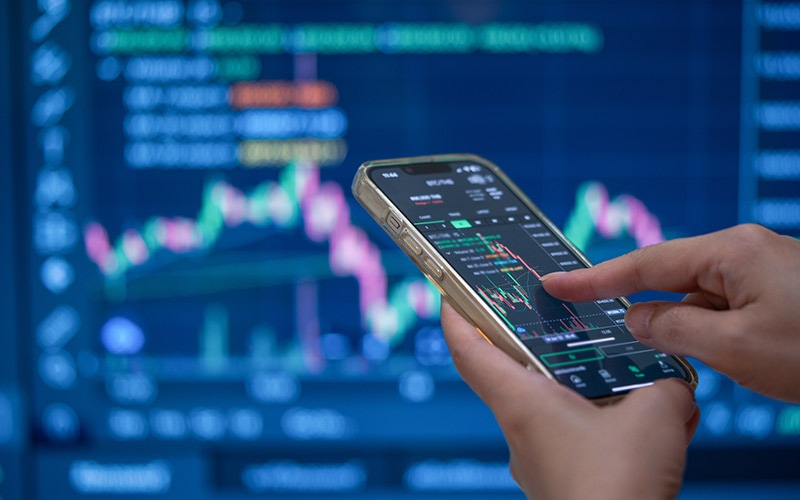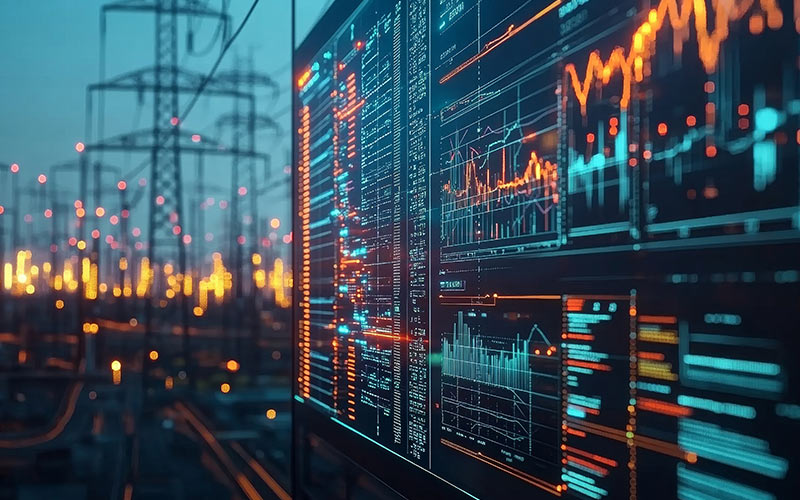
Insights
- Understanding asset tokenization: Asset tokenization revolutionizes investments by allowing fractional ownership in real estate and art.
- Benefits of fractional ownership: Tokenization increases investment accessibility by enabling multiple investors to share ownership of high-value assets.
- Blockchain technology: Utilizing blockchain for asset representation ensures transparency and security in transactions.
- Regulatory landscape: The evolving regulations around asset tokenization create challenges; clarity is essential for investor confidence.
- Navigating security risks: Tokenized assets face cybersecurity threats, including theft and hacking, highlighting the need for robust security measures.
- Market manipulation concerns: The decentralized nature of tokenized markets increases vulnerability to scams, such as pump-and-dump schemes.
- Importance of interoperability: Achieving interoperability between different blockchain platforms is crucial for seamless trading of tokenized assets.
- Educating investors: Raising awareness about the benefits and risks of asset tokenization is vital for mainstream acceptance and adoption.
- Market growth potential: The tokenized market could reach $1 to $4 trillion by 2030, indicating significant investment opportunities.
- Enhanced liquidity: Tokenization can improve liquidity for traditionally illiquid assets, broadening investment horizons.
What's driving the need for asset tokenization
Traditionally, investing in assets like real estate and art required significant capital, making them inaccessible to many. Asset tokenization can shift this balance, potentially opening these asset classes to more investors. At its core, asset tokenization creates a digital representation of the ownership of a real asset stored on a blockchain: This digital asset is known as a token. This digital token can then be divided into smaller fractional units, represented by further digital tokens, allowing multiple investors to own a portion of the underlying asset.
Asset tokenization begins with a valuation of the underlying asset, followed by its division into smaller, tradable units or shares. These shares are then transformed into digital tokens on a blockchain platform, creating a digital representation of ownership. These tokens are listed on specialized platforms to facilitate trading, allowing investors to buy, sell, or trade them — unlocking liquidity and accessibility.
Challenges impacting the asset tokenization ecosystem
While there are potential benefits to asset tokenization, challenges such as regulatory uncertainty, security, and market infrastructure development need to be addressed. Overcoming these challenges requires collaboration among regulators, industry participants, and technologists. As the ecosystem matures, we can expect solutions to emerge that will pave the way for wider adoption of asset tokenization. A few challenges include:
- Regulatory uncertainty: The regulatory landscape for tokenization is still evolving, and regulatory clarity is essential for widespread adoption. Different authorities have varying regulations, creating legal and compliance complexities for issuers and investors.
- Technological limitations: Infrastructure needs to be significantly improved to enable scalability and blockchain integration that can handle large-scale tokenization of assets. Issues such as network congestion slow transaction speeds and hinder the adoption of tokenization.
- Security risks: As with any digital system, tokenized assets are vulnerable to cyberattacks and security breaches. Cybercriminals often use tactics such as 51% attacks, private key theft (through phishing attacks, compromised devices, weak key management), routing attacks (via network manipulation, consensus process disruption), Sybil attacks (such as fake node creation), and cryptojacking. For instance, Bitcoin Gold, a minor fork of Bitcoin, went through multiple 51% attacks in 2018 and 2020. Protecting the security and integrity of tokenized assets is crucial to maintaining investor confidence.
- Market manipulation: The decentralized nature of tokenized markets makes them more susceptible to manipulation and market abuse. This includes issues such as pump-and-dump schemes and insider trading. For example, rug pull scams, where insiders create a hype about a project and abandon it — resulted in $170 million lost by investors in 48 attacks in 2022.
- Interoperability: Ensuring interoperability between blockchain platforms and token standards is essential for seamless trading and exchange of tokenized assets. Lack of interoperability can create fragmentation and hinder market growth. There has been some work toward ensuring interoperatbility via token standards. For example, Ethereum blockchain has introduced token standards such as ERC20, ERC721, and ERC1155 — each serving different purposes and functionalities, which allows developers to create and utilize tokens in a consistent manner.
- Investor education: Many investors are unfamiliar with tokenization and its associated risks and benefits. Educating investors about the potential advantages and disadvantages of tokenization is crucial for its successful adoption. Nearly 45% of respondents in a State Street study cited lack of awareness and demand among buy-side institutions as the top barrier.
Educating investors about the potential advantages and disadvantages of tokenization is crucial for its successful adoption.
Addressing these challenges will be crucial for the continued growth and development of the asset tokenization market. As the technology matures and regulatory frameworks become more established, tokenization is expected to play an increasingly important role in shaping the future of capital markets, as per the World Economic Forum.
Stakeholders benefit from asset tokenization
Despite its shortcomings, total tokenized market capitalization is expected to reach between $1 trillion and $4 trillion by 2030 (excluding cryptocurrencies), says McKinsey. This is still minuscule compared to the current global market portfolio’s total worth of $175 trillion, indicating a slow pace of adoption. However, there are potential benefits:
- Investors: Tokenization offers fractional ownership of assets and expands investment opportunities beyond traditional boundaries, creating access to diversified portfolios across a broader range of asset classes. Moreover, tokenization can enhance liquidity, making it easier to buy and sell assets previously considered illiquid . Blockchain technology underpins the process by providing transparency to the asset ownership and transaction history, fostering trust and confidence among investors.
- Asset owners: Tokenization unlocks the value of previously illiquid assets by creating liquid markets. Blockchain increases efficiency and reduces costs by eliminating intermediaries. Additionally, tokenization presents opportunities for asset owners to generate new revenue streams through mechanisms such as fees or dividends.
- The economy: Asset tokenization has the potential to impact the broader economy, as increased investment and improved liquidity can stimulate economic growth. While previous estimates pegged tokenization to represent 10% of global GDP, that is perhaps no longer true given tokenization’s slow adoption. Yet its benefits are likely to democratize access to financial markets and promote financial inclusion, which can empower a broader population to participate in the economy. Additionally, tokenization can potentially foster the development of new financial products and services, driving economic progress and diversification. Research shows that the technology can potentially lift the global GDP by $2.1 trillion by 2030. Asset tokenization has the potential to change the way we invest, trade, and raise capital. One study estimates that the total potential economic gain from the tokenization of real-world assets is $2.4 trillion per annum globally due to increased efficiencies in trading, custody, and settlement processes.
Yet its benefits are likely to democratize access to financial markets and promote financial inclusion, which can empower a broader population to participate in the economy.
Choosing the right asset for the right platform
Selecting the right asset for tokenization is crucial to success. This process involves a comprehensive evaluation of business goals, target audiences, and market trends, ensuring that the chosen assets are economically viable.
- Asset selection and feasibility analysis: Evaluate business goals, target audience, and market trends to identify suitable assets for tokenization. The aim is to ensure the economic viability of the tokenization project.
- Token type definition (TTD): Based on the asset's nature, determine the most appropriate token type. A TTD defines the structure, properties and behavior of tokens on a blockchain, making it easier for developers to create, issue, and manage tokens. TTDs are issued in two forms:
- Fungible tokens (FTs): Interchangeable, identical, and indistinguishable from one another, and therefore are of equal value. These include cryptocurrencies (Bitcoin, Ethereum), stablecoins (Tether, USD coin), utility tokens (filecoin, Binance coin), governance tokens (Uniswap, Compound), and commodity tokens (gold-backed tokens, oil-backed tokens)
- Nonfungible tokens (NFTs): Unique, distinct, and identifiable, and represent ownership of a unique asset. These include digital art (Decentraland), collectibles (sports memorabilia, virtual trading cards), gaming (in-game assets, virtual real estate), and music and entertainment (virtual concert tickets, exclusive content).
- Compliance framework: Compliance experts analyze global, national, and industry-specific regulations to ensure the tokenization project adheres to legal requirements, such as the SEC for securities and HIPAA for healthcare.
- Tokenomics development: Tokenomics is the study of the economics and design of tokens within a blockchain ecosystem. It involves analyzing and designing the token's properties, behavior, and incentives to achieve specific goals and outcomes. It is not a part of feasibility analysis. Creating a robust tokenomics model is critical to the token's success.
- Blockchain platform selection: Choose the optimal core blockchain platform (Ethereum, Corda, Hyperledger Fabric) for the tokenization project and develop a custom platform on top of it. For example, ING's trade finance blockchain is a custom-built platform created on the core blockchain platform Corda.
- Smart contract development: Developers create smart contracts to tokenize the asset, automate its behavior, and enforce compliance with legal regulations.
- System integration: To ensure seamless operations, integrate the tokenized asset management solution with accounting software, payment gateways, KYC/AML verification services, trading platforms, and other relevant systems.
- Token issuance: Conduct token issuance through initial token offerings (ITOs), security token offerings (STOs), or initial DEX offerings (IDOs), which are fundraising methods on blockchain platforms or other suitable channels, allowing investors to acquire tokenized assets.
- Optional token listing: To enhance liquidity and accessibility, listing tokens on selected cryptocurrency exchanges.
The outlook for asset tokenization
While asset tokenization is new, its potential impact on bringing liquidity to the economy can be significant. By offering enhanced liquidity, fractional ownership, reduced costs, and improved transparency, tokenization changes how we invest, trade, and raise capital. While challenges remain, the potential benefits of tokenization are attractive. Jenny Johnson, the president and CEO of Franklin Templeton, said that the tech has potential for cost savings due to fewer intermediaries and lower administrative overheads, while Roland Berger, a consultancy, pegged cost savings at €4.6 billion ($5.2 billion) by 2030. As adoption grows and regulatory frameworks evolve, use cases will emerge in investment strategies, portfolio diversification, and will alter the way financial assets are traded.





